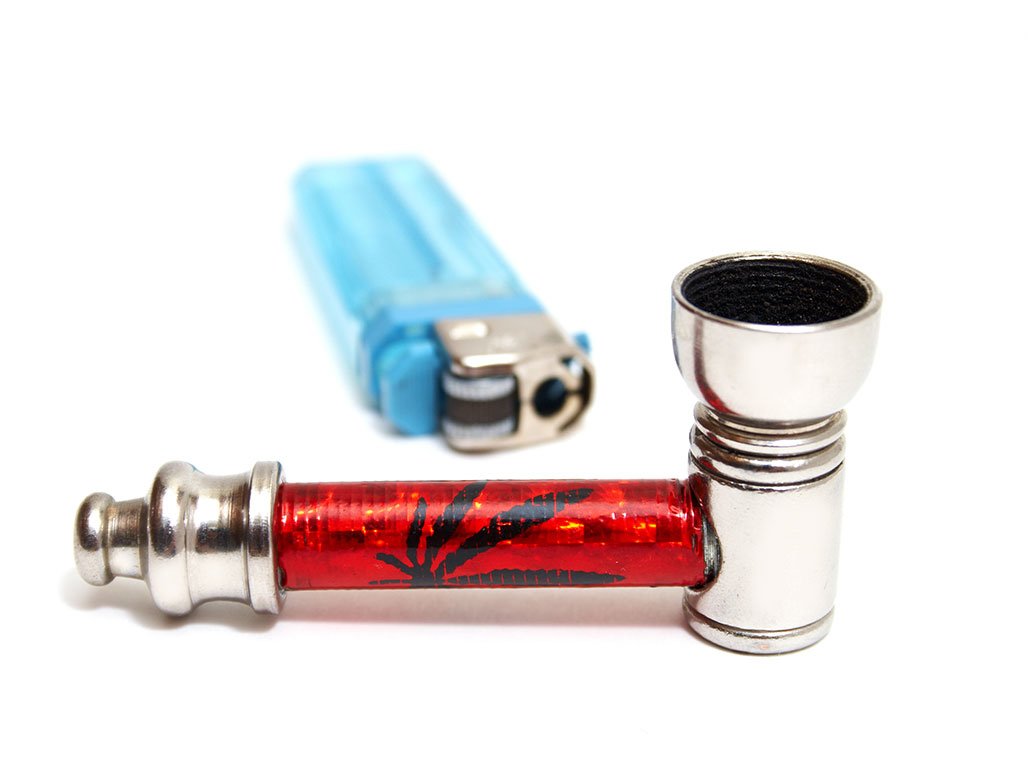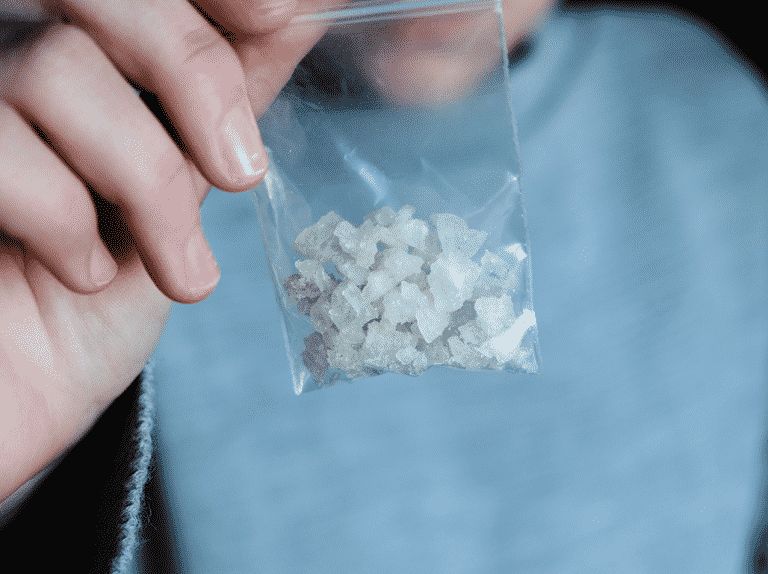Crack cocaine got its name because of the crackling sound it makes when smoked. Crack cocaine emerged in California during the 1970s. Cocaine in powder form was hot on the scene, and a cheaper form of cocaine was produced by mixing cocaine with baking power soda or ammonia to provide a less expensive and more intense high. Crack exploded into urban areas during the mid-‘80s.
Crack cocaine use is called freebasing
Crack cocaine, also known as “crack” or “rock,” is a freebase form of cocaine that can be smoked or injected (if broken down effectively into a condensed liquid). Crack offers a rapid, intense high. It is the most addictive form of cocaine. Highs are short and therefore users become prisoner to a cycle of chasing the feeling crack cocaine provides. Crack releases an unpleasant smell when it is smoked. It is said to smell like a mixture of chemicals and burning plastic. One former user describes it as smelling like “burnt soap.”

Crack Cocaine and Cocaine facts
Both come from the coca plant (erythroxylum coca) which is native to South America. The leaves of the coca plant carry a natural stimulant, from which cocaine is made in powder form and is sniffed. Crack is produced from cocaine when it is mixed with a legal noneuphoric substance like ammonia or baking soda. Then it’s cooked down to remove hydrochloride and produces a smokable product. It is typically in the form of an off-white or yellow-looking rock. A crack rock is water-insoluble; however, cocaine powder is not.
Crack Cocaine’s Impact on the brain and body
As a powerful stimulant, crack causes a rapid, euphoric high. Its stimulant effect on the body means that it will speed up mental and physical processes, resulting in increased energy and a sense of control. Crack cocaine use results in almost immediate effects because the drug is inhaled into the lungs, where it is then absorbed directly into the bloodstream. The effects are felt quickly and the peak is fast. Start to finish commonly lasts up to 20 minutes. Because the high is so short-lived, users often abuse crack in a binges, called “runs.”The binge and crash cycle of use adds to risk of tolerance, dependence, and addiction.
Crack Cocaine’s Effects on the Brain
Crack cocaine is a strong central nervous stimulant that interferes with, and causes excess amounts of, dopamine in the brain. A neurotransmitter associated with pleasure and movement, dopamine is the neurotransmitter released as part of the brain’s reward system. As a result, the psychological effects can be extremely reinforcing; after having tried crack cocaine, the user will rapidly develop an intense craving for the drug since the chemistry of the brain’s reward system has been altered. Recovery is possible, but it takes time for the brain to heal.
Crack kills the skin cells on the face which can lead to red/brownish patches. The reason this happens is because using crack reduces the lack of oxygen and blood supply throughout the body, and as a result, it damages the white cells of the blood. This leads to skin necrosis.
Surprisingly, injecting crack cocaine has grown to be quite common. The process involves breaking down the substance with vinegar or lemon juice. That being said, the most popular form of consumption is by being smoked in a glass pipe.
“A person can become addicted after his or her first time trying crack cocaine.”
Long-Term Crack Cocaine Use Effects
- Severe depression
- Irritability and mood disturbances
- Aggressive, paranoid behavior
- Delirium or psychosis
- Tolerance and addiction, even after just one use
- Auditory and tactile hallucinations
- Heart attack and heart disease
- Stroke
- Respiratory failure
- Brain seizures
- Sexual dysfunction (for both men and women)
- Reproductive damage and infertility (for both men and women)
- Increased frequency of risky behavior
- Death
Addiction and Withdrawal
Cocaine is a highly addictive substance, and crack cocaine is substantially more addicting, as the drug is far more potent and is smoked. Users quickly develop a tolerance to crack cocaine, needing more of the substance to achieve the desired effects. Because the high from crack cocaine is so short-lived, users commonly smoke it repeatedly in order to sustain the high. This can lead to an even faster onset of addiction. Also, because crack cocaine works on the brain’s system of reward and punishment, withdrawal symptoms occur when the drug’s effects wear off. These symptoms can include depression, irritability, extreme fatigue, anxiety, an intense craving for the drug, and sometimes even psychosis. Users will often keep using crack cocaine simply to avoid the negative effects of withdrawal.
Save
Save
Save





















